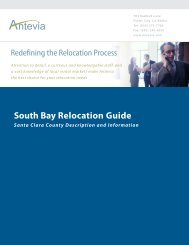California Motorcycle Handbook - Antevia
California Motorcycle Handbook - Antevia
California Motorcycle Handbook - Antevia
Create successful ePaper yourself
Turn your PDF publications into a flip-book with our unique Google optimized e-Paper software.
• Make critical decisions andcarry them out.Examiners may score on factorsrelated to safety such as:• Selecting safe speeds toperform maneuvers.• Choosing the correct path andstaying within boundaries.• Completing normal and quickstops.• Completing normal and quickturns or swerves.PREPARING TO RIDEWhat you do before you start atrip goes a long way towarddetermining whether you’ll getwhere you want to go safely.Before starting any trip, a saferider makes a point to:• Wear the right gear.• Become familiar with themotorcycle.• Check the motorcycleequipment.• Be a responsible rider.WEARING THE RIGHT GEARWhen you ride, your gear is“right” if it protects you. In anycrash, you have a far betterchance of avoiding serious injurywhen you wear:• An approved helmet.• Face or eye protection.• Protective clothing.Helmet UseCrashes can occur—particularlyamong new riders. Many crashesresult in head or neck injurieswith head injuries being far morecommon. All operators andpassengers must wear anapproved safety helmet whenriding on a motorcycle, motordrivencycle, motorized bicycle,or motorized scooter. Researchshows that head and neck injuriesaccount for a majority of seriousand fatal motorcyclist injuriesand that with few exceptions,head and neck injuries arereduced by properly wearing anapproved helmet. Here are somefacts to consider.• An approved helmet lets yousee as far to the sides asnecessary.• Most crashes happen on shorttrips (less than five miles long)just a few minutes after startingout.• Most riders are riding slowerthan 30 mph when a crashoccurs. At these speeds,helmets can cut both thenumber and the severity ofhead injuries by half.No matter what your speed in acrash, if you are wearing a helmetyou are three times more likely tosurvive a head injury than if youaren’t wearing one.Helmet SelectionThere are two primary types ofhelmets which provide twodifferent levels of coverage:three-quarter and full face.6







